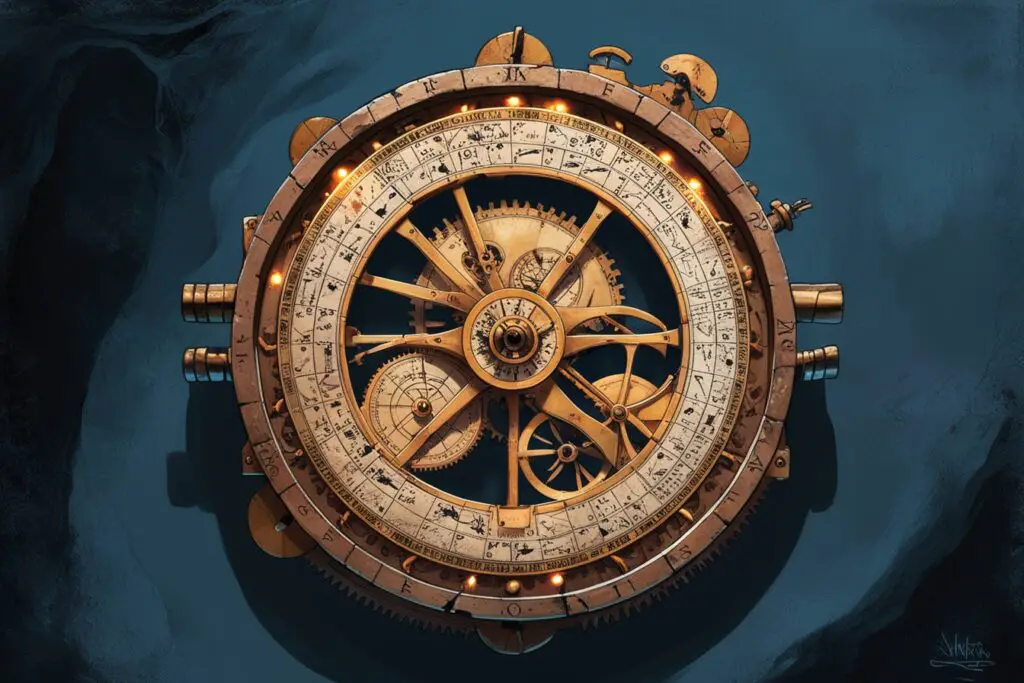
History is filled with mysteries that spark our curiosity.
From ancient artifacts that seem far ahead of their time to mysterious texts written in unknown languages, these discoveries captivate our imagination.
Were these creations just remarkable for their era, or could they hold secrets that might change what we know about the past?
The Antikythera Mechanism
The Antikythera Mechanism is often called the world’s first computer.
Discovered in 1901 in a shipwreck off the coast of Greece, this intricate device is believed to date back to 100 BCE.
Composed of bronze gears, it was used to predict astronomical events like eclipses and planetary positions.
What makes it controversial is its sophistication.
The craftsmanship rivals technology not seen again until the 14th century.
How could an ancient civilization create something so advanced?
A study published in Nature reveals that the device was accurate enough to track the Metonic cycle, a 19-year lunar calendar still used in modern astronomy argue it points to lost knowledge or even extraterrestrial influence, but most experts credit the advanced engineering of ancient Greeks.
- Read also: Unearthing the Past: A Glimpse into Ancient Roman Artifacts
- Read also: Journey Through Time: A Glimpse into the Sumerian Civilization Timeline
The Baghdad Battery

The Baghdad Battery, found in Iraq in the 1930s, consists of a clay jar, a copper cylinder, and an iron rod.
Dated to around 250 BCE, it’s believed by some to have been an ancient battery capable of producing an electric current.
What were they powering? No one knows.
Theories range from electroplating jewelry to religious rituals involving static electricity.
Critics argue the lack of evidence for wiring or devices undermines the battery theory, but the possibility of ancient electricity still fascinates scientists.
Could the Baghdad Battery be a glimpse into lost technologies or an example of coincidence?
The jury is still out.
The Ica Stones
Discovered in Peru, the Ica Stones are a collection of thousands of carved stones depicting everything from humans coexisting with dinosaurs to advanced surgeries.
The carvings defy our understanding of history, suggesting either time travel or a long-lost advanced civilization.
The controversy lies in their authenticity.
While some claim the stones are genuine artifacts, others believe they are modern forgeries.
A Smithsonian Magazine report points out inconsistencies, such as carvings made with modern tools .
Still, argue that mainstream science dismisses evidence that doesn’t fit established timelines.
The Voynich Manuscript
The Voynich Manuscript is a mysterious book written in an undeciphered language and filled with strange illustrations of plants, astrological symbols, and unusual diagrams.
Carbon dating traces it back to the early 15th century, but its meaning has puzzled experts for centuries.
The manuscript’s purpose is still hotly debated.
Some believe it’s an elaborate hoax, while others think it holds hidden knowledge, such as alchemical recipes or ancient medical practices.
Researchers at Yale University have found that the manuscript’s structure resembles natural languages, suggesting it might contain real information.
Is it a treasure trove of secrets or the work of a skilled prankster? The mystery lives on.
The Nebra Sky Disc

Unearthed in Germany in 1999, the Nebra Sky Disc is a bronze artifact with gold inlays depicting celestial bodies.
Dated to 1600 BCE, it’s considered the oldest known astronomical map.
What’s puzzling is its advanced understanding of the cosmos.
Archaeologists believe it was used to align agricultural practices with celestial events.
However, critics argue its cultural context doesn’t align with the technology of its time.
Could it suggest cross-cultural exchange or even lost knowledge of astronomy?
Its exact purpose remains unclear.
The Ubaid Lizard Figurines
Discovered in Iraq and dating back to around 4000 BCE, the Ubaid lizard figurines are small sculptures with humanoid bodies and reptilian heads.
Their unusual design has sparked theories about ancient alien contact, capturing the imagination of many.
Skeptics, however, believe these figurines were symbolic, possibly representing deities or mythological figures within the Ubaid culture.
While most see them as a reflection of artistic creativity or cultural beliefs, their distinctive appearance continues to fuel debates and intrigue.
The Codex Gigas (Devil’s Bible)
Weighing in at 165 pounds, the Codex Gigas is the largest medieval manuscript in the world.
Created in the 13th century, it contains the entire Bible, medical texts, and even a giant illustration of the devil.
Legend has it the book was written in a single night by a monk who sold his soul to the devil.
While historians dismiss this as folklore, its origin and purpose remain murky.
The book’s content has raised questions about its connection to secret societies or occult practices.
Piri Reis Map

The Piri Reis Map, drawn in 1513 by an Ottoman admiral, depicts parts of Europe, Africa, and South America with stunning accuracy.
What’s truly baffling is its inclusion of Antarctica—centuries before its discovery—and the coastline appears ice-free.
Some theorists claim it’s evidence of an advanced pre-ice-age civilization with global navigation capabilities.
Critics argue it’s a compilation of older maps, but its accuracy continues to baffle cartographers.
- Read also: Journey Through Time: Exploring the Egyptian Civilization Timeline
- Read also: A Lost Civilization: Rise and Fall of The Indus Valley Civilization
Final Thoughts
These artifacts captivate us not just because of their mystery but because they challenge our understanding of history.
Whether they’re evidence of advanced ancient civilizations, lost technologies, or human ingenuity, they remind us how much we still have to learn.
The truth behind these controversial artifacts may never be fully known, but their stories inspire curiosity and exploration.



